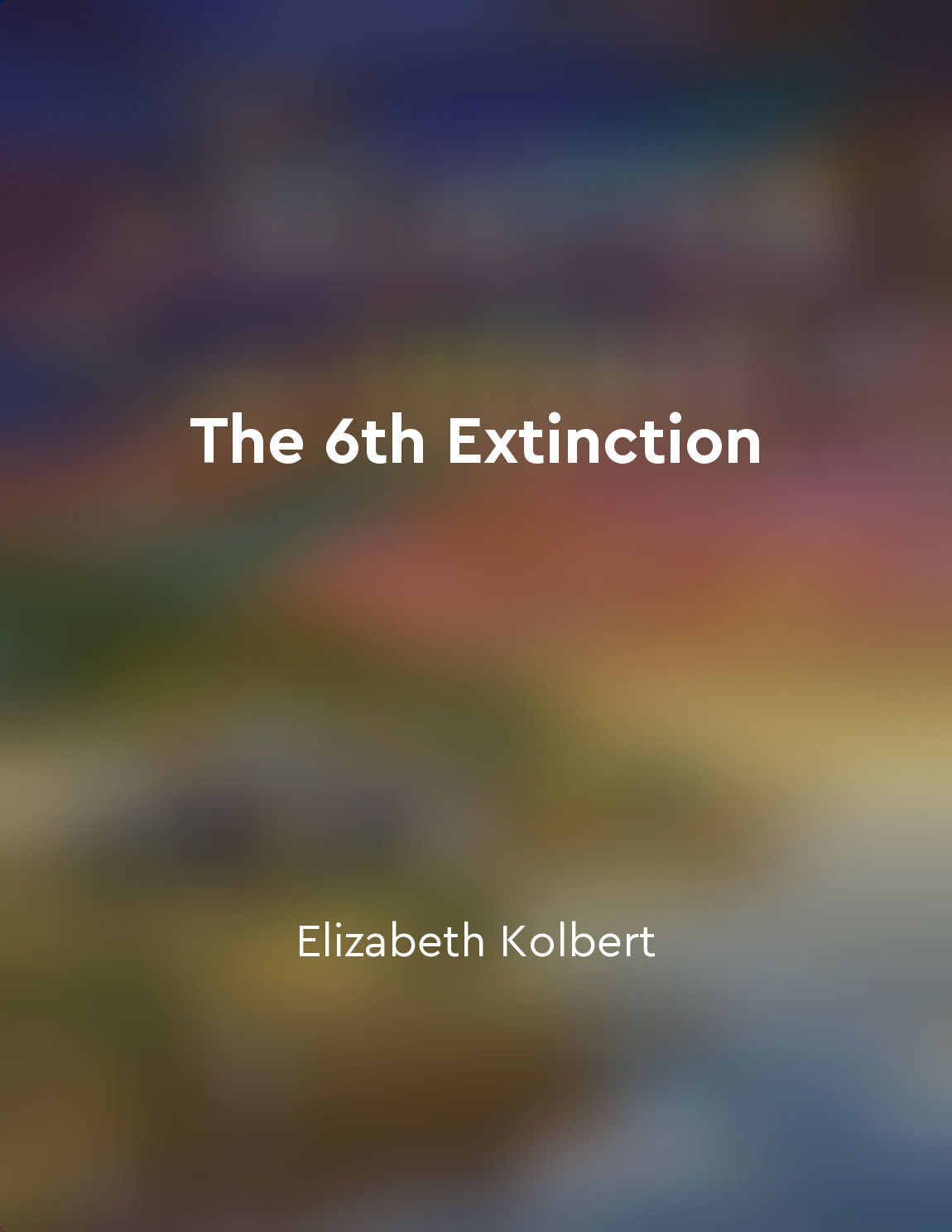Audio available in app
The interconnectedness of species makes extinction a complex issue from "summary" of The 6th Extinction by Elizabeth Kolbert
The intricate web of life on Earth is a delicate balance that has evolved over millions of years. Each species, no matter how big or small, plays a crucial role in the ecosystem. When one species goes extinct, it can set off a chain reaction that affects numerous other species. This interconnectedness makes extinction a complex issue that goes far beyond the loss of one particular animal or plant. In 'The 6th Extinction', Elizabeth Kolbert explores how human activities have accelerated the rate of extinction, causing a biodiversity crisis that is unprecedented in Earth's history. As species disappear at an alarming rate, the repercussions are felt throughout the entire ecosystem. For example, the extinction of a predator can lead to an overabundance of its prey, which in turn can disrupt the balance of other species in the food chain. Furthermore, the loss of key species can have far-reaching consequences that are not immediately apparent. Some species act as pollinators, helping plants reproduce and maintain genetic diversity. Others help recycle nutrients in the soil or control pest populations. When these species disappear, the ecosystem can become imbalanced, leading to declines in plant and animal populations. In addition, the extinction of one species can create a domino effect that affects other species that depend on it for survival. For instance, a plant that relies on a specific pollinator may also disappear if its pollinator goes extinct. This loss can have cascading effects on other species that depend on the plant for food or shelter.- The interconnectedness of species highlights the complexity of extinction and the importance of preserving biodiversity. As humans continue to alter the environment through deforestation, pollution, and climate change, the web of life becomes increasingly fragile. By understanding and appreciating the intricate relationships between species, we can work towards protecting the diversity of life on Earth for future generations.
Similar Posts
The End of Nature is a wakeup call
The world as we know it is changing rapidly. The signs are all around us, from the melting ice caps to the disappearing species...
Behavioral economics can inform environmental policy
Behavioral economics offers valuable insights that can be applied to the design of environmental policies. By recognizing that ...
Ecology is the study of interactions between organisms and their environment
Ecology is a branch of biology that deals with the study of interactions between organisms and their environment. It focuses on...
Spaceship Earth relies on all of us to thrive
We must understand that our beloved planet Earth is like a spaceship, carrying all of us through the vastness of the universe. ...
Human responsibility towards the environment
The idea of our responsibility towards the environment is a central theme in 'Losing Eden'. It is a call to action, a reminder ...
Transparency and accountability are essential for building trust in agricultural technologies
Transparency and accountability in the agricultural sector are crucial for fostering trust in the technologies being developed ...
The application of biology in medicine improves human health outcomes
The field of medicine has greatly benefited from the application of biological principles. These principles have played a cruci...
Preserving the planet's natural beauty
Protecting the planet's natural beauty is a noble goal that many people strive for. It involves safeguarding the diverse ecosys...
Bringing nature home is essential for a sustainable and healthy future
Our future depends on the health of the natural world around us. The plants and animals that make up our ecosystems are not jus...
Societies collapse due to environmental damage
Throughout history, societies have risen and fallen, with one common factor often being environmental damage. When a society ov...


